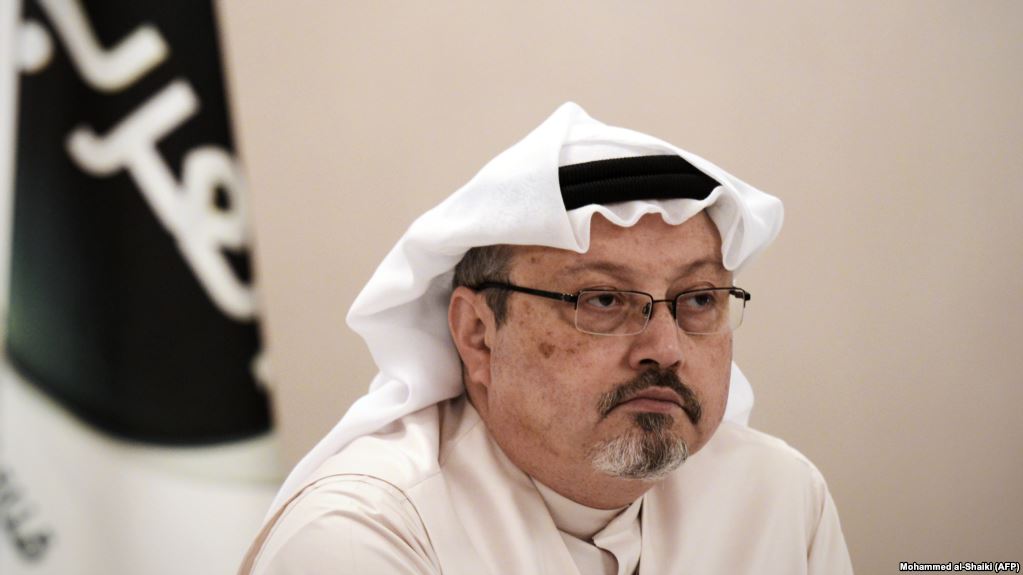STORY BY DANIEL SAENZ
It seemed like the plot for a James Bond movie — Jamal Khashoggi, a Saudi Journalist who lived in the United States as an employee of the Washington Post, walked into the Saudi consulate in Istanbul, Turkey only to disappear and later be mysteriously declared dead. So who was this man and what happened? Khashoggi had already built a considerable amount of clout from his on-the-ground reporting in Afghanistan in the fight between Osama Bin Laden and the Soviet Union. Recently, he built a profile as a critic of Mohammad Bin Salman, a self-described reformer that was at the helm of the women’s movement for the right to drive. As of late, Bin Salman has been purging the Saudi political system by arresting all of his political opponents on the grounds that they were too corrupt, were the original feminist activists who brought negative PR to the Kingdom through their protest, or were journalists who question the government in any way, shape or form.
In a morbid way, Khashoggi appeared to know his time was running out as he was publicly afraid of the crackdown from Bin Salman on dissenting voices. Then, he disappeared on live camera footage when entering the consulate. Originally, the Saudi government denied any knowledge of the event. However, as more evidence surfaced, the government finally acknowledged that Khashoggi was dead and that he died in a fistfight.
However, it then came to light that rather than a fist fight, Jamal was kidnapped by Saudi agents who then cut him up with a bone saw, used acid to eliminate the body, and even hired a body double to make sure that no one would know that he was even gone. Backed against a corner, the government has admitted that there was a rogue operation within the government and that Khashoggi was a dangerous Islamist anyhow.
As expected, there has been no significant pushback from any western governments against this killing of an American resident and journalist from France, Great Britain, and especially the United States. We are continuing to sell arms from Saudi Arabia as buying their oil. The United States has revoked the visas of the agents involved. This, however, is simply a slap on the wrist as it does nothing to address the possibility that Bin Salman himself gave the order to kill Jamal and the inconsistencies in the government’s narrative. So why do we tolerate such open human rights abuses? There is one simple answer: Iran.
To counter the balance of Iran in the Middle East, the United States, among many other allies, has made it a point to never criticize Saudi Arabia simply for the power politics between Saudi Arabia and Iran. Leaving all of the complex geopolitics aside, this event has deeper implications for journalists all across the world now that the global political order has implied that is okay to murder journalists for simply doing their job.
Dr. Ginger M. Loggins, a professor of journalism at Fort Hays State University, weighed in on why governments typically seek such drastic measures to clamp down on news they don’t like.
“They’re really just trying to control the news. Take the example of the Chinese government kidnapping the Interpol chief. The last thing you want is for journalists to try and investigate it,” Loggins said. “Or like in Mexico, people who report on crime, corruption within the government, and how its all connected pose a risk to their own safety and they are very well aware of that risk.”
She further went on to point out that unfortunately, this is not anything new in the world of journalism.
“This may be shocking to a lot of millennials, but this is not anything new,” Loggins said. “Ida B. Wells was often threatened. Reporters during the civil rights movement were probably injured for that coverage, especially for African-American reporters going down south. So there really is nowhere new for us to go from here.”
As unfortunate as it seems, it is becoming more and more apparent that this is the sort of risk journalists across the globe take, and we in the industry must gradually come to terms with this fact.

